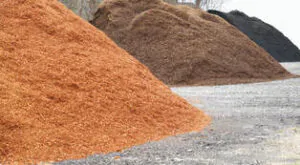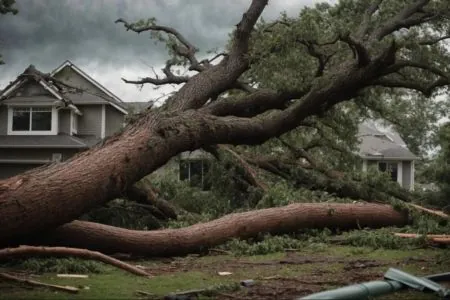organic matter, wood, soil, mulch, woodchips, bark, compost, weed control, decomposition, orchard, nutrient, shrub, nitrogen, groundcover, pine, seed, landscape, fertilizer, leaf, pest, lawn, pruning, insect, moisture, hardwood, herbicide, green waste, germination, straw, soil test, matter, fungus, walnut, waste, allelopathy, arborist, soil ph, crop, trunk, conifer, microorganism, termite, climate, lumber, landfill, erosion, posted, lawn care, fresh, dye, emerald ash borer, manure, sawdust, heat, oak, species, disease, seedling, dust, tree care, perennial, rubber mulch, evaporation, soil moisture, irrigation, carbon, soil fertility, forest floor, pesticide, roof, ecosystem, wind, recycling, habitat, yard, drought, soil health, clay, soil quality, agriculture, plastic mulch, leaf mold, fruit tree, wood chips vs mulch, sod, mold, natural environment, spruce, soil erosion, soil structure, plastic, biodiversity, mulch vs wood chips, landscape fabric, gravel, environmentally friendly, absorption, living mulch, hay, vine, softwood, lawn mower, myth, mower, email address, rubber vs wood mulch, rubber or wood mulch
Is mulch the same as wood chips?
Mulch and wood chips are not the same; mulch typically consists of finely shredded materials, while wood chips are larger pieces from tree trimming. Both serve distinct purposes in landscaping, including moisture retention and weed prevention.
Is mushroom mulch the same as wood chips?
Mushroom mulch and wood chips are not the same; mushroom mulch is composed of composted materials, which can enhance soil nutrients, while wood chips are made from shredded tree bark and branches primarily for aesthetic and weed control purposes.
How is mulch different from wood chips?
The difference between mulch and wood chips lies in their composition and purpose. Mulch is typically finer and helps retain moisture, suppress weeds, and enhance soil quality, while wood chips are coarser, primarily used for decoration and preventing erosion.
What are benefits of using wood chips?
The benefits of using wood chips include effective moisture retention, weed suppression, and soil temperature regulation, making them ideal for landscaping. Additionally, they enhance the aesthetic appeal of gardens and can decompose over time, enriching the soil.
Can wood chips improve soil health?
Wood chips can significantly improve soil health by enhancing moisture retention, providing essential nutrients as they decompose, and promoting beneficial microorganisms. This leads to improved soil structure and fertility, making it ideal for landscaping and plant growth.
Is mushroom mulch effective for landscaping?
Mushroom mulch is effective for landscaping as it improves soil health, retains moisture, and suppresses weeds. Its nutrient-rich composition also enhances plant growth, making it a beneficial choice for both aesthetic and functional purposes in gardens.
What types of mulch are best?
The best types of mulch vary based on your specific landscaping needs. Organic options like bark, wood chips, and straw provide nutrients while suppressing weeds, whereas inorganic choices like rubber or gravel offer durability and low maintenance.
How to choose between mulch and wood chips?
Choosing between mulch and wood chips depends on your landscaping needs. Mulch is ideal for moisture retention and weed suppression, while wood chips provide a more decorative look and improve soil structure over time.
Are wood chips suitable for garden paths?
Wood chips are suitable for garden paths as they provide a natural, attractive surface that enhances landscaping while offering good drainage and weed suppression. However, they may require periodic replenishment and can be less stable than other materials.
What colors are available for wood chips?
The available colors for wood chips include natural hues like brown and tan, as well as dyed options in vibrant shades such as red, black, and green, allowing you to choose based on your landscape design preferences.
How often should mulch be replaced?
The frequency of mulch replacement depends on various factors, such as type and environmental conditions. Generally, mulch should be refreshed every 1 to 3 years to maintain its effectiveness and enhance your landscape's appearance.
What are the costs of wood chips?
The costs of wood chips vary based on factors such as quality, source, and location, typically ranging from $20 to $50 per cubic yard for bulk purchases. Local suppliers may offer different pricing options, so it’s advisable to check with them for accurate estimates.
Is it safe to use wood chips?
Using wood chips is generally safe as long as they are sourced from healthy trees and handled properly. They provide benefits for landscaping while helping to suppress weeds, retain moisture, and enhance soil quality.
How do wood chips retain moisture?
Wood chips retain moisture by creating a barrier that slows evaporation. Their structure allows air pockets, which trap humidity and help keep the soil below them moist, promoting healthier plant growth and reducing the need for frequent watering.
What mulch is best for vegetable gardens?
The best mulch for vegetable gardens includes straw, wood chips, and shredded leaves. These materials help retain moisture, suppress weeds, and improve soil health, all of which contribute to healthier plants and more productive harvests.
Can wood chips suppress weed growth?
Wood chips can effectively suppress weed growth. By forming a thick layer over the soil, they block sunlight and create a barrier, reducing the chance for weeds to germinate and thrive.
When should I apply mulch in spring?
Mulch should be applied in spring when the soil begins to warm up and frost is no longer a concern, typically between late March and early May. This timing helps retain moisture and suppress weeds as plants start to grow.
Are there any downsides to wood chips?
The downsides to wood chips include their potential to compact over time, which may hinder water drainage and soil aeration. Additionally, they can attract pests and may decompose quickly, requiring more frequent replacement.
How to properly apply wood chips?
Applying wood chips properly involves layering them to a depth of 2-4 inches around plants or trees while ensuring they are several inches away from plant bases and tree trunks to prevent moisture retention and decay.
What kind of mulch lasts the longest?
The type of mulch that lasts the longest is typically hardwood mulch, such as bark mulch or shredded hardwood. These materials decompose slowly, providing extended durability and minimizing the need for frequent replacement.
Does wood chip mulch attract pests?
Wood chip mulch can attract pests if not properly maintained, as it provides a habitat for insects and small animals. However, when used appropriately and managed well, the risk can be minimized.
How to know when to replace mulch?
Knowing when to replace mulch is essential for maintaining a healthy landscape. You should replace mulch when it becomes compacted, discolored, or begins to decompose, typically every one to three years, depending on the type and exposure to the elements.
Can I mix wood chips with soil?
Mixing wood chips with soil is beneficial as it improves soil structure and drainage. However, ensure they are well-composted to avoid nutrient competition while planting to optimize plant health.
How do I store wood chips?
Storing wood chips properly ensures their longevity and effectiveness. To store wood chips, place them in a dry, well-ventilated area, ideally under a cover to protect them from moisture and direct sunlight, which can cause deterioration.
What is the best depth for mulch?
The ideal depth for mulch is typically 2 to 4 inches. This thickness helps retain soil moisture, suppress weeds, and improve the overall aesthetic of your landscape without suffocating plant roots.
Can mushroom mulch improve garden aesthetics?
Mushroom mulch can enhance garden aesthetics by providing a rich, earthy appearance and contributing to soil health. Its unique texture and color create visual interest, while also suppressing weeds and retaining moisture for healthier plants.
How does wood color affect mulch efficiency?
The effect of wood color on mulch efficiency is significant. Darker mulch absorbs more heat, aiding in moisture retention and promoting soil temperature stability, while lighter-colored mulch reflects sunlight, keeping soil cooler and preventing weed growth.
What plants thrive with wood chip mulch?
Plants that thrive with wood chip mulch include acid-loving varieties such as azaleas, rhododendrons, and blueberries, as well as perennials like hostas and astilbes. These plants benefit from the organic matter and moisture retention provided by wood chip mulch.
Are wood chips environmentally friendly?
Wood chips are environmentally friendly as they are a natural product that can help reduce waste by repurposing tree debris. They also improve soil health, retain moisture, and suppress weeds, making them a sustainable landscaping choice.
Can mulch help with soil erosion issues?
Mulch can help mitigate soil erosion issues effectively. By covering the soil, it reduces water runoff, maintains moisture, and protects the topsoil from wind and rain, ultimately supporting healthy plant growth and preventing further erosion.
is wood chips the same as mulch, wood chips vs mulch, difference between wood chips and mulch, difference between mulch and wood chips, mulch vs wood chips, bark mulch vs wood chips






